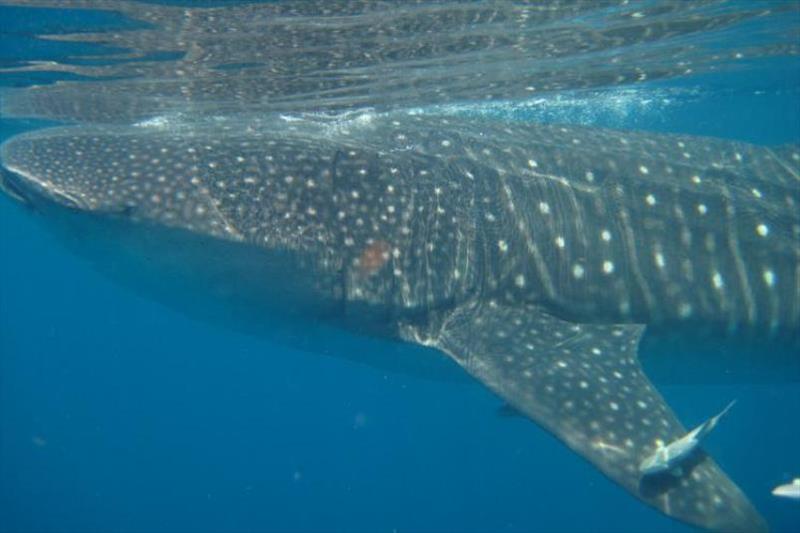
New publication highlights whale shark movements in the Gulf of Mexico
by NOAA Fisheries 19 Jan 2021 17:03 UTC

Whale shark swimming and feeding at surface during a June 2010 feeding aggregation at Ewing Bank. Photos and video taken under NOAA research permit © Eric Hoffmayer
Whale sharks are known to occur in the northern Gulf of Mexico waters during summer and fall months. However, for years biologists have wondered where whale sharks go when they aren't feeding along the continental shelf in the northern Gulf during this time.
The shelf edge provides food for whale sharks like plankton and fish eggs, but when they venture away from the shelf—where do they go? NOAA shark scientist Eric Hoffmayer knows! His work is published in this month's Frontiers in Marine Science.
The article outlines the seasonal occurrence of whale sharks in the northern Gulf based on more than 800 sightings from 1989 to 2016. It also looks at the movements of whale sharks tagged for this study.
Hoffmayer and colleagues tagged whale sharks to find out where they go and to better understand their travel patterns. Forty-two whale sharks were tagged in the northern Gulf between 2008 and 2014 and scientists studied their movements for up to a year. The satellite tags used in this study communicate the location of the tagged animal to one or more satellites. That information can then be accessed by the researchers, allowing them to determine the path of movement, or track, of the tagged animal.
Most of the whale shark sightings took place during the summer and fall. The largest number of animals were seen off Ewing Bank, a known aggregation site off the coast of Louisiana. The whale shark track duration ranged from three to 366 days. Animals ranged in size from 14 to 39 feet. All of the whale sharks stayed within the Gulf of Mexico. Much of their time spent away from the known feeding area was in open ocean waters of the Gulf of Mexico.
So why is it important for scientists to know where whale sharks go and how they get there? For the proper management and conservation of this species, biologists need to have a better understanding of their movements and habitat use patterns. This is especially true since they routinely spend time in Mexican and Cuban waters. The results of this study were limited to the duration the tags remained on the sharks. Biologists surmise their movements far exceed what was documented. By further documenting the range of this whale shark population, scientists will be able to assess any potential threats that may impact them within their range.
The next big steps are to further document the importance of Ewing Bank to this whale shark population and monitor their longer term, multi-year movements in the region. Our guess is that their migratory patterns occur over 2-3 year periods. Longer term tag retention will help to explain these movements and possibly demonstrate movements into distant waters.
Hoffmayer's research was conducted in partnership with NOAA colleagues and:
Whale shark facts:
- They are not whales, but the world's largest fish species, reaching up to 46 feet and nearly 24,000 pounds.
- Whale sharks are filter feeders, opportunistically feeding on plankton, krill, fish eggs, and small fish. They have more than 3,000 tiny teeth, but they are not used for feeding.
- Whale sharks can grow to a very old age. The oldest documented whale shark is 75 years old, but it is thought that they can live well past 100 years.
- They are slow swimmers, but their large size allows them to potentially migrate long distances.
- Whale sharks give birth to live young.
- Whale sharks are considered endangered by the International Union for the Conservation of Nature.
- There are four whale sharks living in captivity at the Georgia Aquarium.